Discover Australia
An enormously important country – both in terms of quality and scale of production – Australia is one of the most versatile wine-growing countries in the world, with its immense size and huge range of climatic and geographical conditions.
Over the last few decades, Australia has played an important role in globalisation of wine and the rise of brands with strong international presence. More recently, there has also been a renewed excitement among the next generation of vignerons around the country, producing interesting, different and small parcels of wine to rival the best of the world.
“Australia is the world’s sixth-largest country, far larger than Europe, and it is this huge size that explains the diversity of wines produced here,” explains Emma Symington MW, Education Development Manager EMEA at Wine Australia. “Today, more than 130 different grape varieties are grown across 65 distinct wine regions, resulting in a huge range of wine styles - meaning there is something for everyone to enjoy. It is truly a continent of wine, and yet it is home to just 4% of global vineyard plantings – that is about the same amount as the French wine regions of Bordeaux and Burgundy combined.”

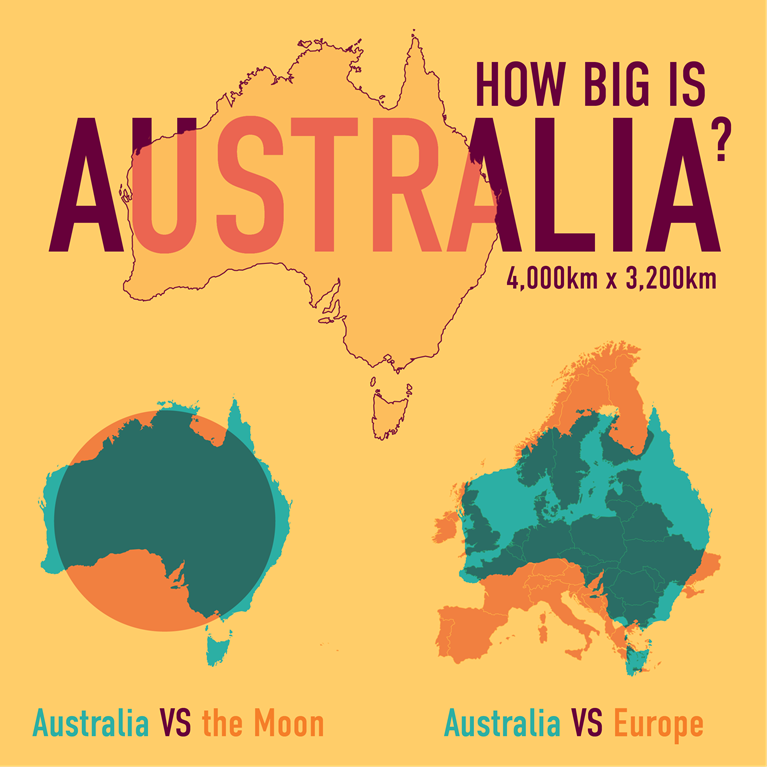
At Bibendum we are lucky enough to have a stellar range of Australian producers, all the way from Margaret River, through Victoria, to Tasmania. Join us for a whirl-wind tour as we re-discover the best of Australia…
Margaret River with Xanadu
The most well-known of Western Australia's wine regions, Margaret River (known locally as ‘Margs’) has an international reputation for great wines. Running along the Western Australian coast, from Cape Naturaliste in the north, to Cape Leeuwin in the south – it stretches along 100km. Sitting on a peninsular, jutting out 65km from the main coastline into the Indian Ocean, means the area has a heavy martime influence – making it particularly temperate.
The Leeuwin-Naturaliste ridge is composed of gneiss and granite, and runs north–south for the length of the peninsula, covered by rusty-red laterite soils, rich in aluminum and iron. Although not very high, the ridge gives sufficient shelter to the vineyards immediately behind it and moderates the prevailing coastal breezes that blow in from the nearby beaches.
Tucked away in Australia’s south-west corner just 4km from Margaret River’s town centre and an equal distance from the magnificent coastline, Xanadu has a long history of crafting outstanding wines that embody all the region has to offer. One of the region’s first vineyards established in 1977 by Dr John Lagan, and now one of the country’s most acclaimed wineries, Xanadu is a true reflection of its idyllic setting and poetic namesake.
The Mediterranean climate and gravel sandy loam soils deliver ideal conditions for Chardonnay and Cabernet, alongside Sauvignon Blanc and Semillon. Under the helm of senior winemaker Glenn Goodall, winemaker Brendan Carr and viticulturalist Suzie Muntz create expressive regional wines of quality.
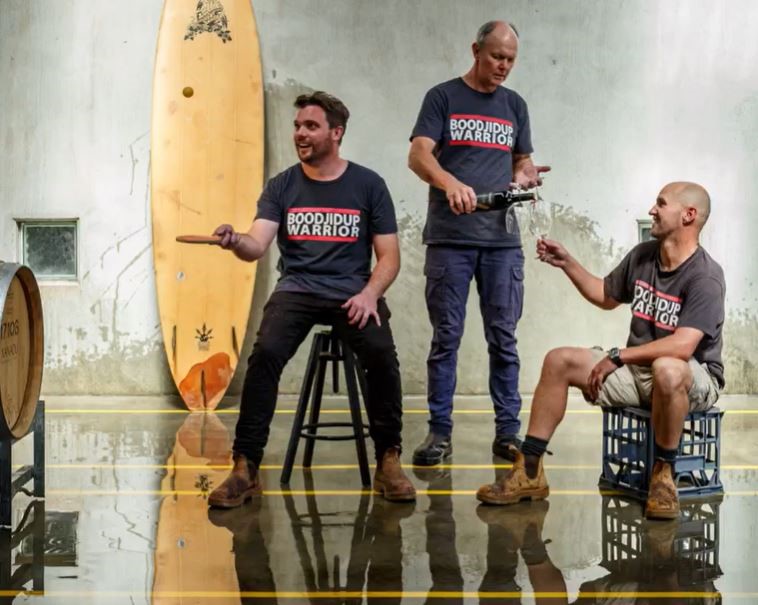
Barossa Valley with Spinifex
Barossa is one of the six wine-producing zones of South Australia, and arguably the most recognised in the Australian wine industry. The region is divided into two sections – the western (and warmer) Barossa Valley, and the cooler, high altitude Eden Valley.
Home primarily to Shiraz, the valley floors are very hot during summer, with temperatures often exceeding 35C. This, along with scant rainfall and limited natural water in the soil, makes irrigation essential.
This is where Peter Schell and Magali Gely established Spinifex in 2001, having had a home in the Barossa Valley for over 20 years. Their journey started with the opportunity to source some great old-vine Mataro growing in deep, white drift sand on the Barossa Valley's Western Ridge.
Today, they source grapes from a group of dedicated growers in both the Barossa and Eden Valleys, taking advantage of the great diversity of the soils and meso-climates of the Barossa to create wines with balance, character, depth of flavour and generosity. With a focus on making regional wines from the traditional Mediterranean varieties, they work with a variety of grapes including: Shiraz, Mataro, Grenache, Cinsault, Carignan, Ugni Blanc, Grenache Gris, Marsanne and Sémillon.
Part of the Artisans of Barossa, this is a group of like-minded producers with a common goal to protect and promote small-batch, sub-regional winemaking.
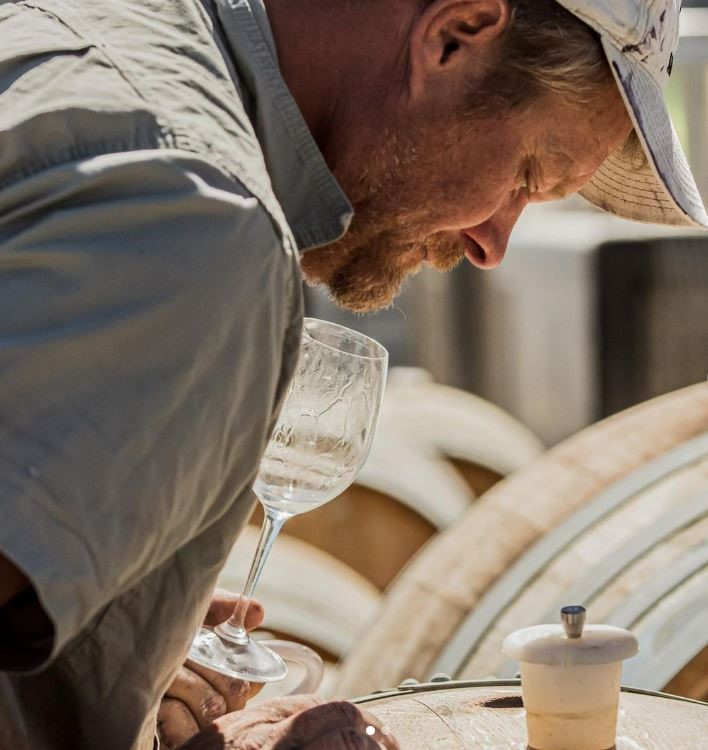
Photo courtesy of @artisansofbarossa
Coonwarra with Petaluma
Coonawarra is the most important wine region within the Limestone Coast zone of South Australia, credited with producing some of the best red wines in the entire country, and often described as Australia's most famous terroir.
The region is one of the very few in Australia strongly defined by the earth in which the vineyards are planted. The Terra Rossa soil found throughout is the key factor in the Coonwarra terroir. This prime land – with the distinct, iron-oxide rich, reddish-brown topsoil over thick, soft limestone – covers a narrow, cigar-shaped strip of 12km by 1km.
With a mild maritime climate, the summer is moderated by cool breezes coming off the sea. This cooling of the vines is critical to the richness and complexity of the region's wines as it extends the ripening period, resulting in a wide range of flavour development.
Petaluma has been producing premium wines since 1976. Based in the Adelaide Hills, they also have vineyard sites in the Clare Valley and Coonawarra, with a focus on selecting individual sites that will deliver the best final product, sticking to the Petaluma concept of ‘Distinguished Sites’.
All of Petaluma’s Cabernet Sauvignon and Merlot comes from the Coonawarra vineyards. Located 100km inland in South Australia’s south east, the maritime climate and cloud cover, combined with the terra rossa soil, makes it an ideal location for red varieties.

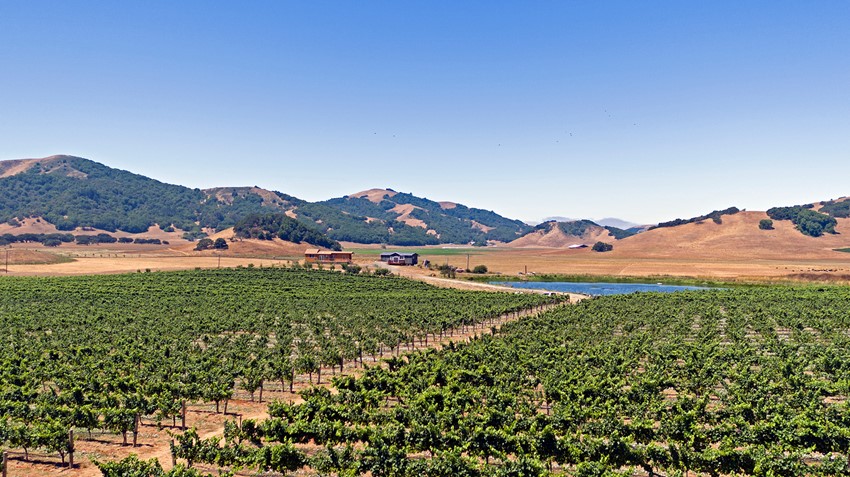
McLaren Vale with Battle of Bosworth
The McLaren Vale wine region, in the north-west of Fleurieu Peninsula, is located approximately 35km south of Adelaide. It is by far the most important wine-producing area in the Fleurieu zone and is also regarded very highly throughout Australia and the world. The diverse portfolio of grape varieties reflects the region's varied grape-growing conditions, due to topographical factors and proximity to the cooling influences of the Gulf Saint Vincent, with altitudes differing markedly according to the location.
Situated in the foothills of the Southern Mount Lofty Ranges and bound to the west by the pristine waters of the Gulf St Vincent, Battle of Bosworth is in the heart of the McLaren Vale wine region.
Joch Bosworth credits an unassuming, pretty little flower called the Soursob with sustaining his thriving vineyards and pristine fruit. With a reverse lifestyle to grape vines, these bright yellow plants outcompete other weeds, without impacting the vine's own survival – in essence, eliminating the need for harmful, synthetic weed killers. But these are just one piece of the puzzles of organic farming at Battle of Bosworth.
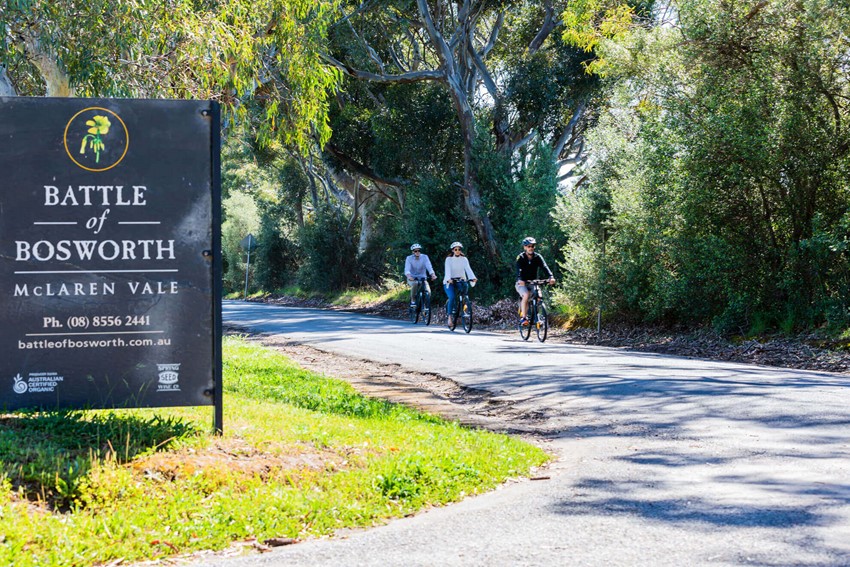
Eden Valley with Rieslingfreak
One of Australia's prime Riesling regions, Eden Valley boasts a range of highly-regarded producers and vineyards. A cooler climate wine region within the Barossa zone, it is the rolling hills of the Barossa Ranges that provide the vineyards with all-important altitude – the single most important factor in shaping the region's wine styles.
Young gun winemaker and Riesling ‘freak’ John Hughes has taken the industry by storm with his on-point and diverse range of Rieslings, produced in the Eden and Clare Valley, as well as Polish Hill River.
A passion project between John and Belinda Hughes, they aim to showcase the grape’s versatility. Each of their handcrafted Rieslings have an allocated number; this number not only represents the region where the fruit was grown but also the style and way it was created.
Fruit for the Rieslingfreak Eden Valley wines (numbers 4, 12 and 44) is sourced from four vineyards located across the Southern Ranges of Eden Valley, from Flaxman Valley in High Eden to the east, through to Springton in the west.
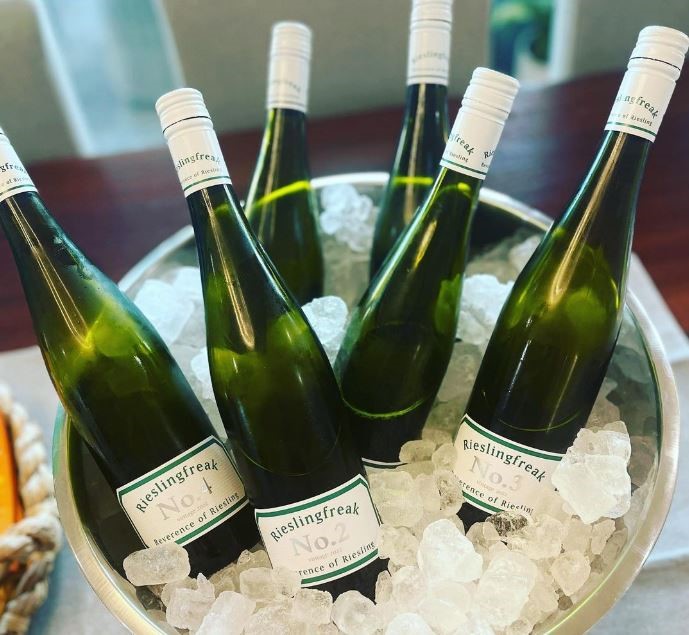
Yarra Valley with Yering Station
The Yarra Valley is a well-respected Australian wine region which occupies the eastern half of the Port Phillip viticultural zone in the state of Victoria. At complete odds with the usual, hot and dry Shiraz-growing image of Australia, Yarra Valley is best known for its bright, complex wines made from Pinot Noir and Chardonnay.
One of Australia's oldest and most celebrated wine regions, the earliest Yarra Valley vineyards were planted in 1838. Comparisons between the Yarra Valley and Burgundy are not uncommon, not only because of their preferred grape varieties, but also because they share a cool climate and undulating topography – interrupted by escarpments and ridges. The Yarra Ridge, in particular, bears more than a passing resemblance to a mini Cote d'Or, and it is at the eastern foot of the slopes that some of the oldest and most-prestigious Yarra wineries are located. Yering Station – the first commercial winery in Victoria – lies just beyond the lower slopes of the ridge.
Chief winemaker, Willy Lunn has more than 25 years’ extensive and intimate cool climate winemaking experience both in Australia and overseas. Committed to dynamic, experimental and progressive winemaking, Willy is setting the bar for cool climate Australian wine very high.
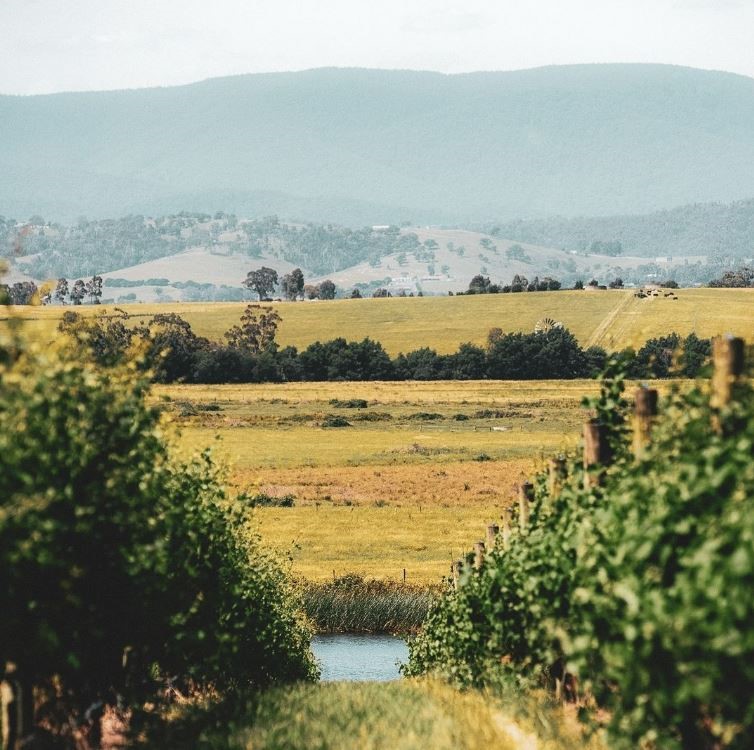
Grampians with Mount Langi Ghiran
Grampians is a historic wine region in western Victoria, located on the eastern side of the craggy Grampians mountain range. This cool, granite-based terroir has been home to viticulture since the gold rush of the 1860s, and nowadays the region is most notable for its spicy, savoury red wines based on Shiraz, as well as its sparkling wines.
Located in the dramatic setting of the Great Dividing Range in the Grampians, Mount Langi Ghiran is one of the most isolated but unique sites in Australian viticulture. The region is one of Australia's coolest and most exciting regions for Shiraz. Nestled between Mount Langi and Mount Cole, the land has a micro-climate that develops intense fruit flavours.
The vineyards, planted in the 1970s, are today producing some of the country’s finest cool climate Shiraz, under the careful guidance of winemaker Adam Louder. He credits the long growing season and a dedicated team for the irresistible complexity and balance of his wines.
Tasmania with Josef Chromy
Tasmania is the ‘Island State’, and most southerly state, of Australia. It lies 240km off the coast of Victoria, on the opposite side of the Bass Strait – a relatively shallow channel that separates the Great Australian Bight from the Tasman Sea.
As in the Yarra Valley and Mornington Peninsula across the Bass Strait in Victoria, the leading grape varieties are Pinot Noir and Chardonnay, and all three regions are noted for their sparkling wines
The wild, wet climate makes the west of Tasmania better suited to the rainforest which covers it than to any form of viticulture. Strahan, on the west coast, receives more than twice as much rainfall as Launceston in the north. By contrast, Hobart, in the east, is the second-driest Australian state capital after Adelaide. It is in the more sheltered climates around Launceston and Hobart that Tasmania's main wine centres have developed.
Most Tasmanian vineyards are located on lower slopes and valleys in the north and east, however, and enjoy a more moderate maritime climate.
Josef Chromy is a true success story based on hard work, experience and a deep-seated commitment to creating quality wine. Established by Josef Chromy himself, at the age of 76, after arriving as a refugee from Soviet-occupied Czechoslovakia.
Today, Josef Chromy Wines boasts a state-of-the-art winery at the base of the vineyard at Relbia, just south of Launceston. The modern and minimalist exterior provides a home for some of the best winemaking equipment available. With 61ha under vine, they produce Pinot Noir, Chardonnay, Pinot Gris, Riesling and Sauvignon Blanc – with a particular focus on world-renowned, traditional method sparkling wines.
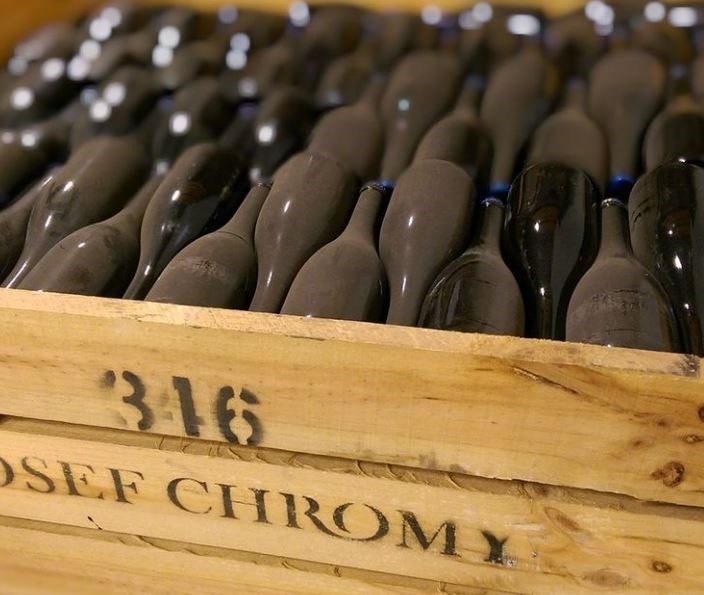
*Source: wine-searcher.com

